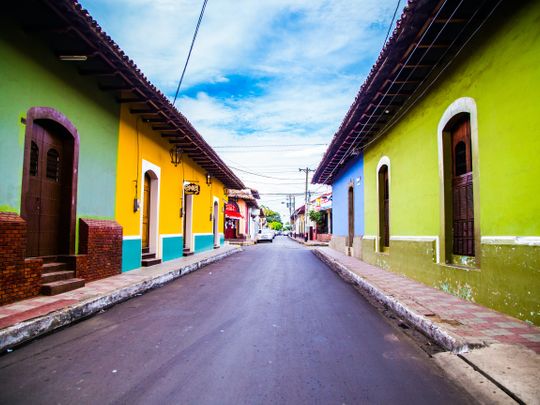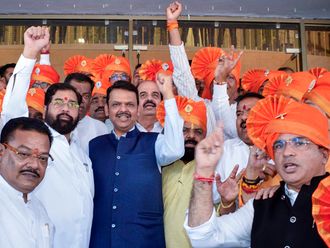
Ten years ago, a bunch of us were on a trip to Nicaragua. June is among the wettest months in this central American nation, famous for its breathtaking lakes and volcanoes. The two largest fresh water lakes in Central America, Lake Managua and Lake Nicaragua, are located there.
I have visited several countries in the world but this was my — and my UAE team’s — first time in Nicaragua. We landed on a cold, wet, windswept day. Flying from Dubai, which was sweltering on June 14, 2012, Managua had an overcast sky with scattered rain clouds.
After an initial few days in the capital city, the high point of which was Darío Park, with its monument to Nicaragua’s famed revolutionary poet Ruben Dario, we decided to head out to one of the country’s most famous volcanoes — Cerro Negro, so named because its sand is pitch black.
Our tour guide, a handsome literature student, regaled us with stories about Darío during the 115km road trip from the capital city to the famous volcano. The great poet had a lasting influence on 20th-century Spanish-language literature and journalism. Hailed as the “Prince of Castilian Letters”, Dario is called the father of the modernismo, a literary movement that deploys Latin and Greek mythology and gives us an insight of the culture and time that we live in.
As soon as the volcano came in sight, the tour guide’s pitch increased, Dario, he remarked, believed in “cultural maturity and pride in nationality”. We nodded but it was the incredible sight of the volcano — located around 25km from Leon — that we were now more interested in.
An active volcano, geologists consider Cerro Negro a relatively younger one. Perhaps the youngest in Central America. The last eruption had taken place in 1999 — 13 years before we set foot on it.
So it was around the foothills of Cerro Negro that we set up our camp. If you are like a band of intrepid travellers from the UAE, who love adventures and feel the adrenalin, it is the Cerro Negro you must head to.
They have a unique practice called volcano boarding in this part of the world. There are a few places on the globe where it takes place. After you reach the crater — which will take you roughly about an hour — you can slide down on a board that you are provided. The sheer thrill of that descent from the volcano apex on that board is what dreams are truly made up of.
At nightfall, there was a cloud burst. One, then another. The guide quietly remarked that it is the most beautiful sleep we would ever have. I recall laying there in the tent, by the Cerro Negro that has been producing frequent eruptions, occasional lava fountains and lava flows, and powerful explosive eruptions every few decades.
My eyelids were heavy. The sound of rain does something to humans. Our brains secrete a sleep-related hormone, melatonin, in the dark or when the light is dark. When it rains, the environment becomes all the more dark. At this time, the secreted melatonin level increases, making people sleepy.
And here we were — my friends and I — by an open vent active volcano in a country full of lakes. Nicaragua is the only Latin American country that both the Spanish and the British colonised. It is also a country where the streets have no names. Nicaraguans, to our surprise, use reference points. If you have to go from point A to point B in a city, you will know your way through landmarks — known buildings, companies, churches, or other reference points. No wonder tourists often struggle but that is the whole area of a vacation — exploring the unknown.
Soon the rain was hammering down on our tents. Sleeping was a good choice. Everyone likes a comfortable state, even if it is by a volnaco. The sleep was a kind of enjoyment and the sweetest.








